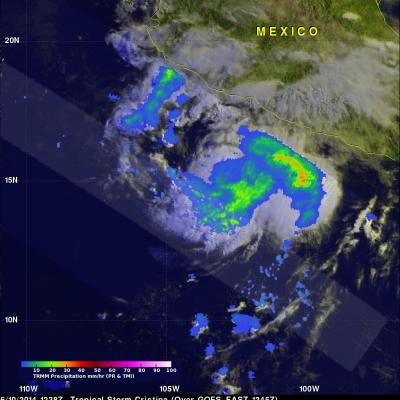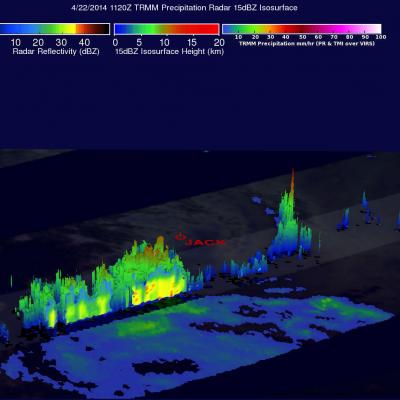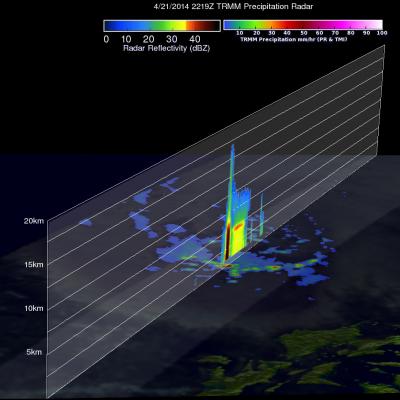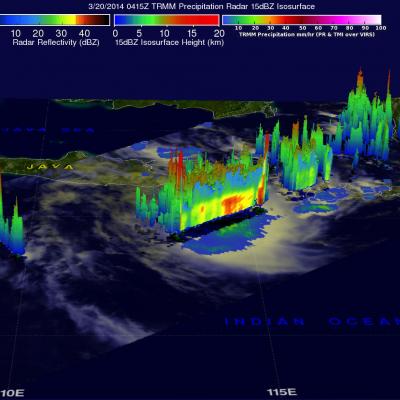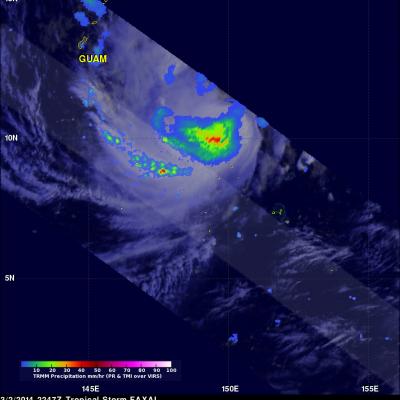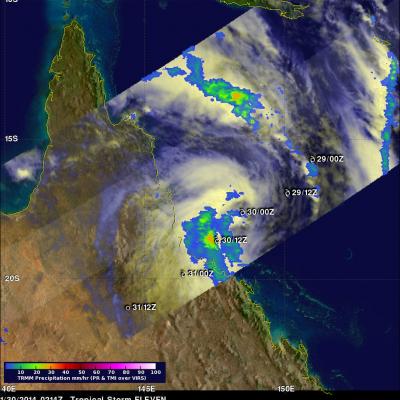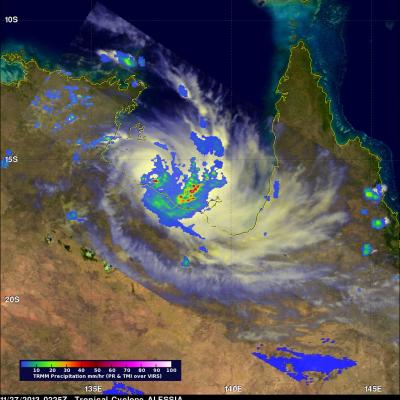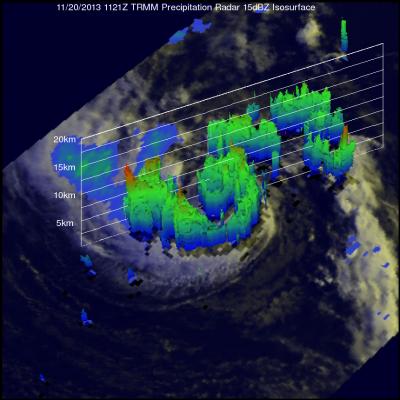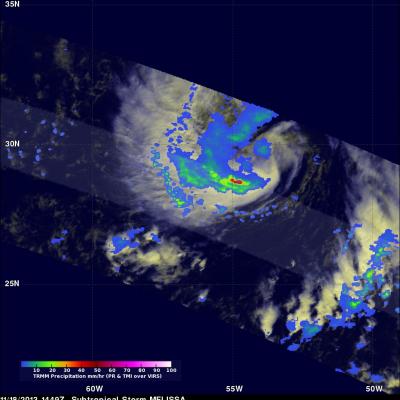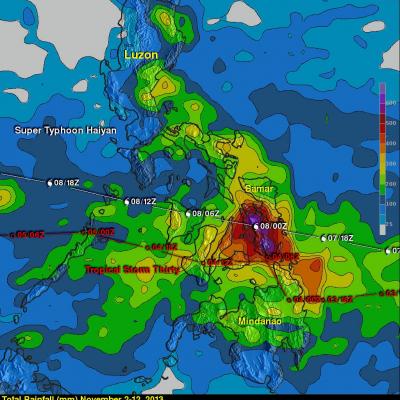Tropical Storm Cristina
The third tropical depression of the eastern Pacific Ocean was upgraded by the National Hurricane Center (NHC) to tropical storm Cristina on June 10, 2014 at 0300 UTC (8 PM PDT). The TRMM satellite had a good early morning view of Cristina on June 10, 2014 at 1238 UTC (5:38 AM PDT). Rainfall from TRMM's Microwave Imager (TMI) and Precipitation Radar (PR) are shown overlaid on an enhanced visible/infrared 1245 UTC image from the GOES-EAST satellite. TRMM TMI data show Large areas of moderate to heavy rainfall west of Mexico's coast. The NHC predicts that Cristina will strengthen to hurricane


